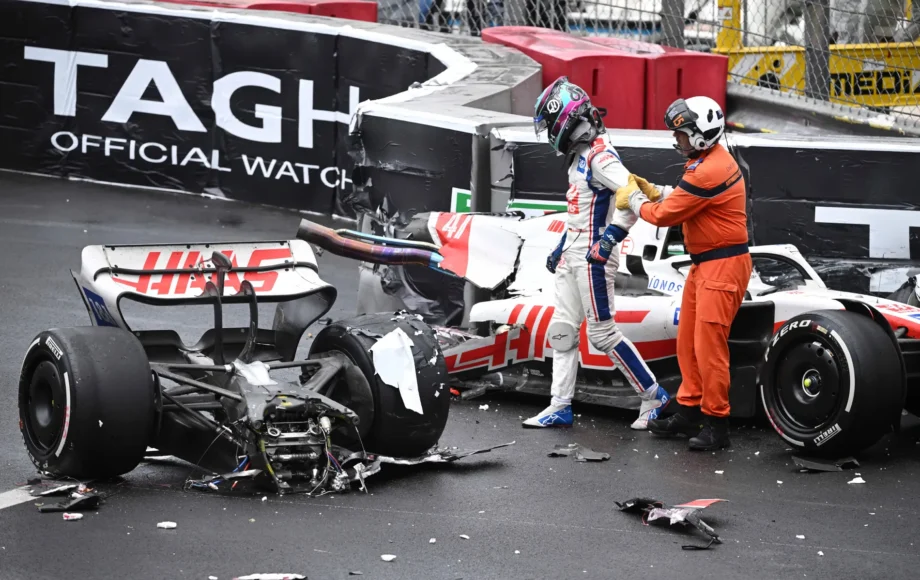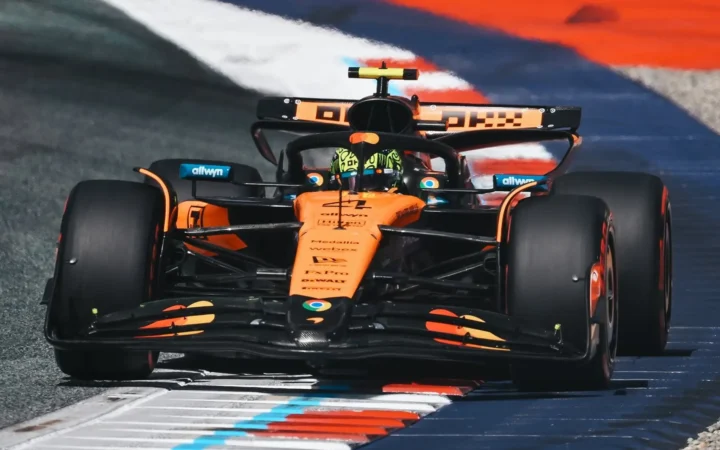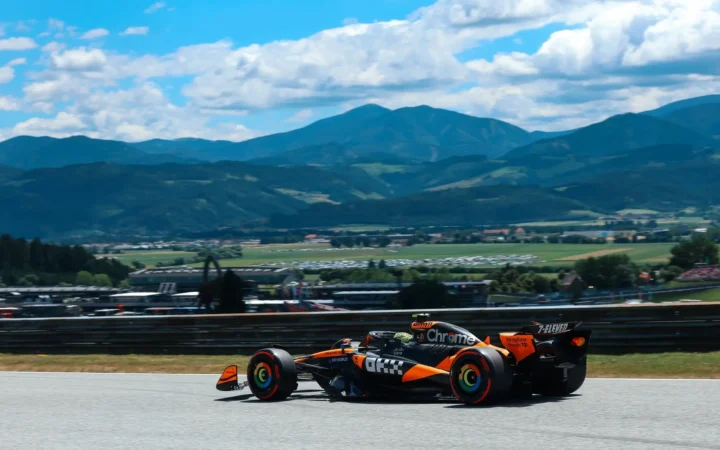From hay bales to tyres, steel and foam barriers, drivers have been protected in high-speed accidents by systems ranging from the rudimentary to the most modern that we see trackside today.
What to know
- TecPro Barriers are made from Polyethylene and Foam to give them unique energy-absorbing properties.
- TecPro Barriers work hand-in-hand with other barrier systems.
- TecPro Barriers are manufactured by a company called “TecPro France”. They have become a staple in motorsports, especially Formula 1.
Over the decades, the FIA has developed and implemented hundreds of safety measures to protect drivers and spectators against high-speed crashes. One of the more recent and modern approaches to these is the TecPro Barrier system.
What are TecPro Barriers?
Before, during, and after every F1 race weekend, stewards will check the track condition after each session, from the tarmac to the barriers, to ensure it meets the highest safety standards governed by the FIA and Formula 1. To enhance the safety of on-track action, the FIA introduced the TecPro Barriers system for its effectiveness in crash safety and its ease of replacement and repair in the event of an accident.
While they might be made from everyday materials, like foam and polyethylene, the secret to their effectiveness is these basic materials and how they are integrated into TecPro Barriers sections.
Polyethylene
Polyethylene is not just any plastic. It boasts impressive tensile strength and can withstand substantial forces without breaking. It’s also super resistant to impacts, making it a great choice for use where a sudden and extreme force might happen.
In building a TecPro Barrier section, polyethylene acts as the barrier’s outer shell; it’s the first line of defence against cars. During a collision, a barrier needs to absorb energy, but it must also retain its structural integrity to prevent debris or the vehicle from punching through. Polyethylene’s ability to withstand impacts ensures the barrier remains largely intact.
Foam
Nestled within the polyethylene shell is dense foam. When a car crashes into the barrier, the foam’s primary job is to manage the high energy of an impact. The foam compresses on impact and acts like a sponge for the kinetic energy. This compression disperses and absorbs a major chunk of the crash energy, which means there is less force that is transmitted back to the car and, more critically, the driver inside. Without it, the consequences of a high-speed impact would be far worse. The foam reduces the G-forces experienced by the driver, which can be the difference between minor and major injuries.
The combination of the materials might be a simple marriage, but they do work and have prevented countless injuries in some quite significant crashes. Another plus of the TecPro barrier system is its modularity, meaning it can be quickly assembled, disassembled, and reconfigured. This flexibility makes it ideal for use in various motorsport events beyond Formula 1, including touring car races, endurance events, and more.
Maximising safety
TecPro Barries are also used alongside the more traditional Armco Barriers on racetracks. When combined, they enhance safety many times over than maybe if one system is used in isolation.
Armco Barriers
For decades, Armco barriers have been a mainstay at racing circuits. Made from corrugated steel sheets, this corrugation wave-like pattern on the surface provides flexibility and strength. When a vehicle, like an F1 car, collides with an Armco barrier, it is designed to flex and not remain rigid. Instead, it deforms, absorbing a significant portion of the impact energy. However, unlike TechPro barriers, these are metal and still have the potential to cause significant injuries.
TecPro’s Cushioning
By strategically placing TechPro sections in front of Armco barriers, race organisers can reduce the amount of force that eventually reaches the Armco barrier behind.
This combined barrier system is a safer and more controlled crash system. When a car impacts the TecPro barrier, much of the crash’s violence is controlled by the foam. When any residual energy reaches the Armco barrier, it’s reduced to a level where the chances of a dangerous rebound are minimised. The car is more likely to remain near the point of impact rather than being thrust back into the path of oncoming racers.

The pairing of TecPro and Armco barriers isn’t just a random choice of two safety systems. It’s a deliberate, thought-out strategy that leverages the strengths of both barriers. In some cases circuits will just place layer upon layers of TecPro barriers instead.
Frequently asked questions
Who makes TecPro barriers?
TecPro Barriers are manufactured by TecPro France. Due to their advanced safety features, the barriers have become a key feature in motorsport safety, especially in Formula 1.
When were TecPro barriers introduced?
TecPro Barriers were introduced in the early 2000s. Since then, they have been increasingly adopted in motorsport circuits because of their effectiveness, making them a preferred choice for many racetracks aiming to enhance safety standards.
What are the three types of safety barriers?
Formula 1 circuits employ a variety of safety barriers to protect drivers, stewards at the trackside, and spectators. The three main barriers used in F1 include:
- Armco Barriers: These are steel barriers made up of corrugated sheets.
- TecPro Barriers: A relatively newer addition to racetrack safety, TecPro Barriers are designed with an outer shell made of polyethylene and an inner section of foam.
- SAFER Barriers (Steel and Foam Energy Reduction Barriers): These barriers, often used in American oval racing like NASCAR, have also seen occasional use in F1 where made from steel tubes backed by foam blocks, usually mounted in front of a concrete wall.
As well as barriers, circuits use other safety measures like gravel traps and extensive runoff areas.
Seen in:










